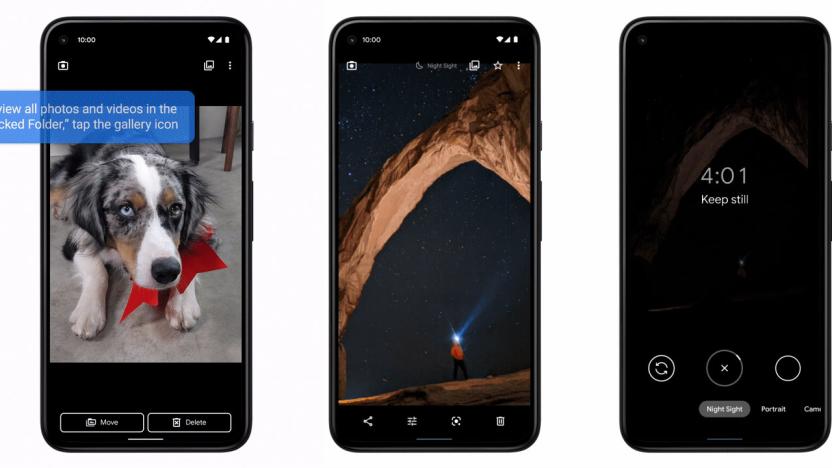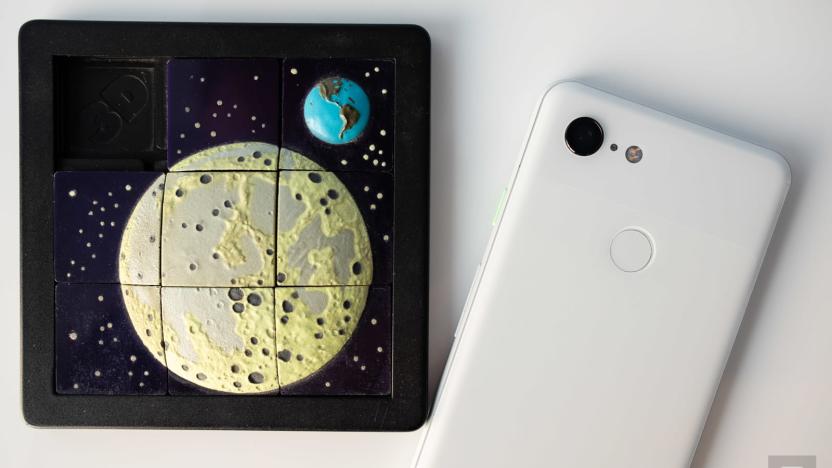astrophotography
Latest

Google Pixel phones can now shoot Night Sight videos
In its latest feature drop, Google is bringing things like Locked Folder in Photos and Night Sight videos to Pixel phones.

Google explains how the Pixel 4 excels at night sky photography
After Google launched its wildly successful Night Sight mode on the Pixel 3, its developers set their sights on an even tougher low-light goal for the Pixel 4: Astrophotography. It's been such a popular feature that Google has released a blog post explaining how it works for that chore. In a nutshell, letting non-experts shoot the stars requires a big dose of AI help.

Leaked Google video reveals Pixel 4 astrophotography mode
The Pixel 4 may allow photography enthusiasts to do something they've never been able to do before with a smartphone camera: astrophotography. A seemingly official marketing video uploaded by Pro Android shows Google's newest smartphone will feature a dedicated mode for taking photos of the night sky. Unfortunately, the ad provides few details about how the new functionality will work other than to promise you'll be able to capture "even the stars." Based on the "hold still" prompt shown in the video, the one detail we can glean is that you won't need a tripod to use to take advantage of the feature.

Nikon's D810A DSLR is designed for shooting stars
If you think that astrophotography is just slapping a camera onto a telescope, Nikon wants to expand your horizons with its latest DSLR. The D810A is a special version of its full-frame sensor D810 aimed squarely at the starshooting and scientific set. In fact, Nikon goes so far as to say that it's "not recommended for general photography" thanks to a modified infrared filter that may distort colors on regular shots. However, the IR tweaks help it "capture the brilliant red hues of diffuse nebulae and constellations" thanks to optimization in the so-called H-alpha spectrum, according to the company.

Canon sensor records video in very low light, sees movie stars of a different sort
Although there's undoubtedly been improvements to low light videography, it's still difficult or impossible for most cameras to record in near-total darkness. Canon has the solution with a video-only, 35mm CMOS sensor that can keep recording even when there's virtually no visible light at all. The prototype's pixels are about 7.5 times larger than in already light-sensitive DSLRs like the EOS-1D X, letting it get focus with as little as 0.03lux of illumination. The result is more than just the perfect camera for a horror movie -- the sensor can capture the Geminid meteor shower and other astronomical phenomena without special tricks. Canon hasn't said when it might ship a video camera toting the new imaging technology, but it's planning to show the sensor at a security expo this week; we may well see the sensor in the field, even if most of its work happens beyond the public eye.

Canon EOS 60Da: the DSLR for that astrophotographer in your life
What if all the answers to the universe resided in the stars? What if your real home was in space? What if you had a camera engineered specifically to capture the beauty of the night sky? You do. Canon has just outed the proper successor to the EOS 20Da, with the 60Da "catering to astronomers and hobbyists" who'd rather spend their clicks on galaxies than flowers and Earthlings. According to Canon, there's a "modified infrared filter and a low-noise sensor with heightened hydrogen-alpha sensitivity" -- something that presumably means the world to astronomers. In more understandable terms, it's packing an 18-megapixel CMOS sensor (APS-C), a 3-inch Clear View LCD (you know, the flip-out kind), a nine-point autofocus system and TV-out support. The Silent Shooting feature that we already praised on the EOS 5D Mark III is here as well, as is a native ISO ceiling of 6,400 and an expandable range that reaches 12,800. Canon also throws in its RA-E3 remote controller adapter -- a vital accessory for those looking to shoot timed exposures greater than 30 seconds -- as well as an AC adapter kit for those all-night sessions. It'll hit select dealers later this month for $1,499, and no, this is not a joke.




